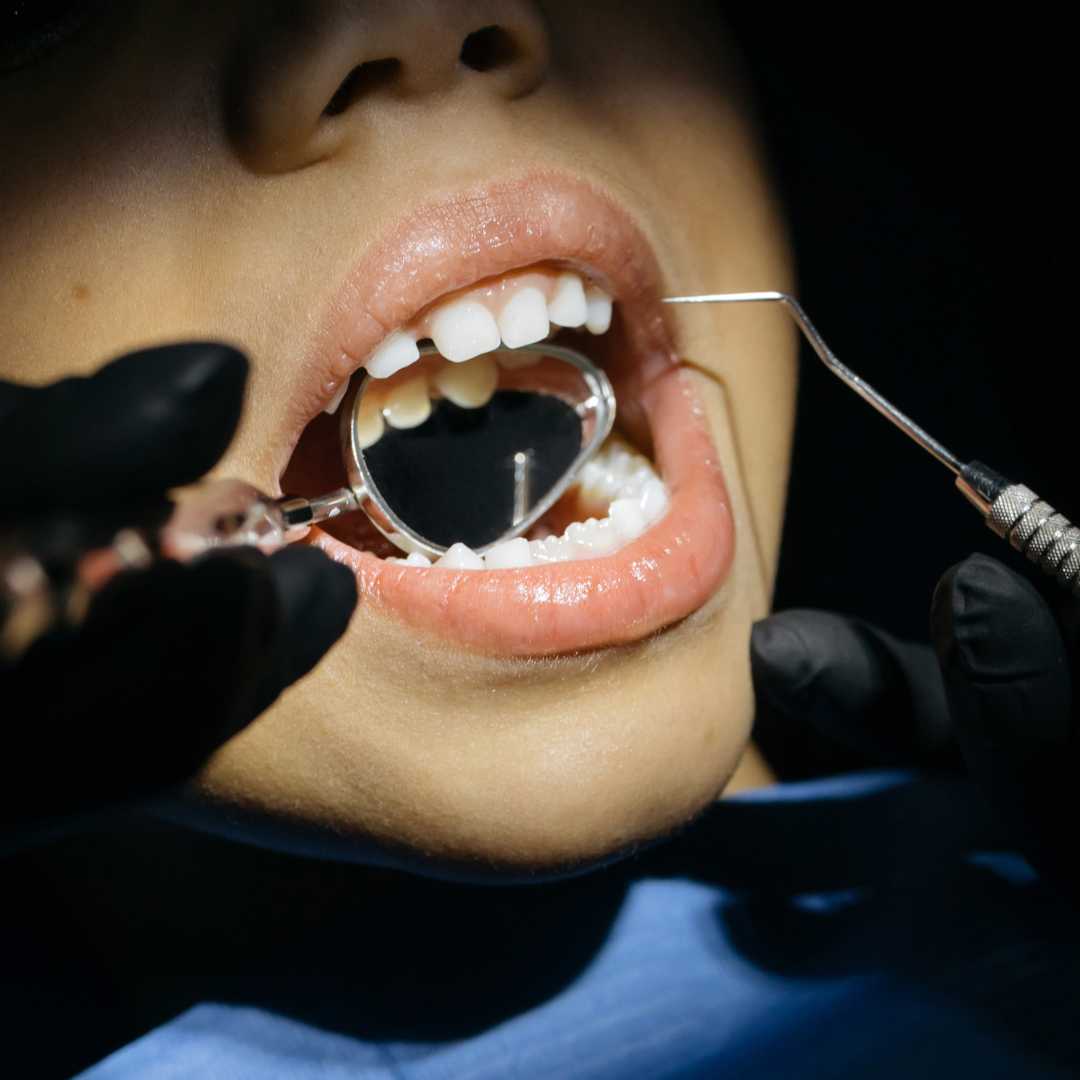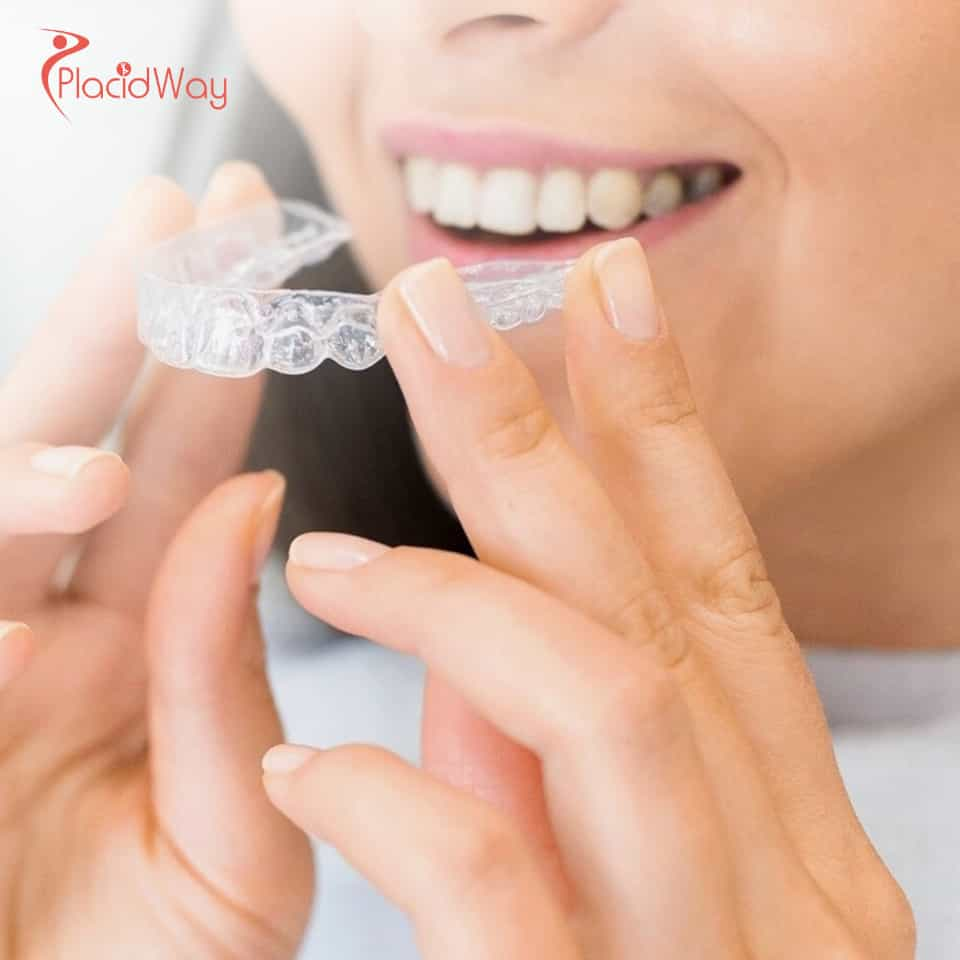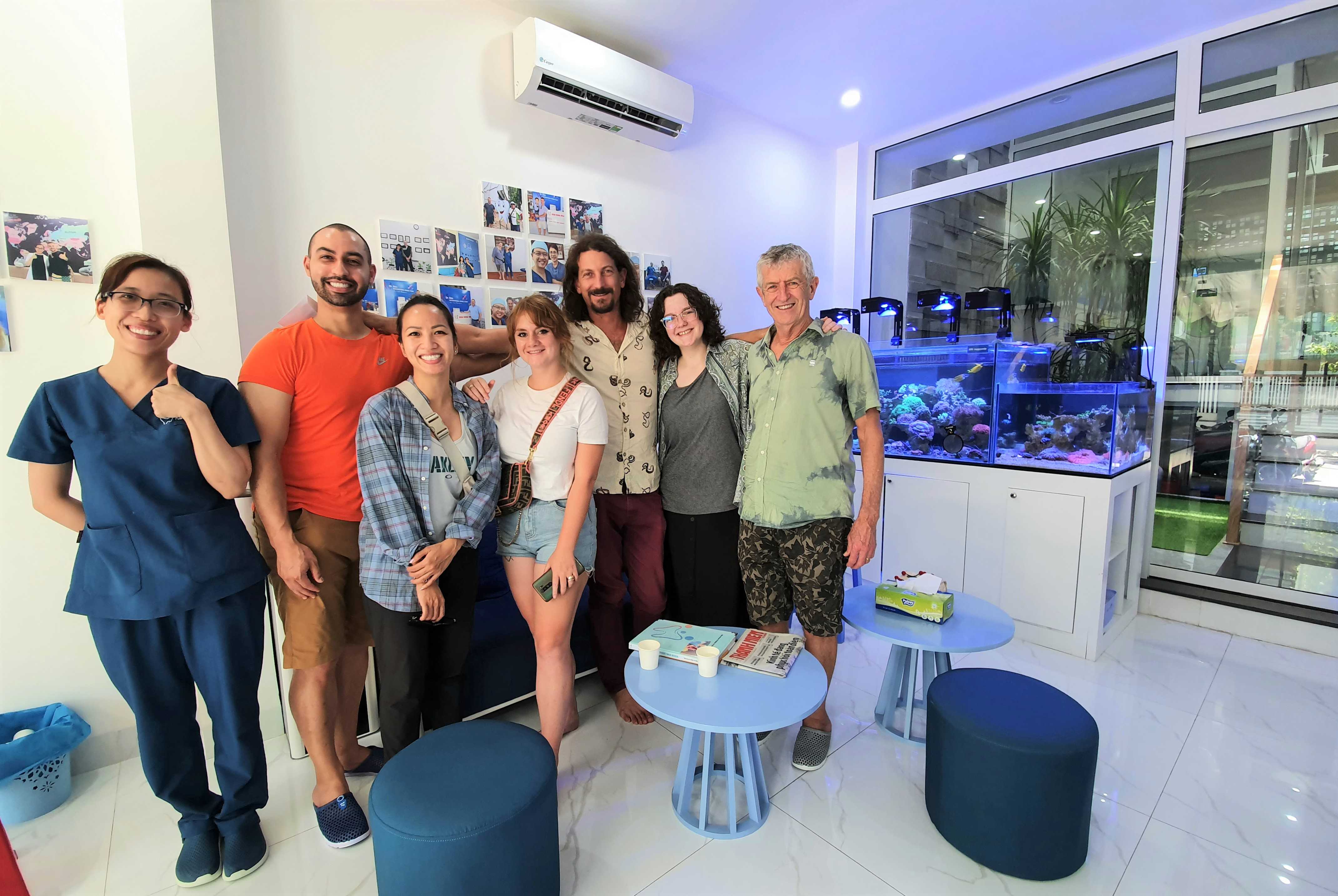.png)
For many Australians, dental bridges at home are costly, prompting interest in dental tourism. Vietnam has become a top choice, offering advanced technology, skilled dentists, and much lower prices. This makes it an attractive option for restoring both smiles and confidence.
This comprehensive guide will walk you through everything you need to know about getting a dental bridge in Vietnam, ensuring a safe, successful, and cost-effective experience.
Key Takeaways
-
Australians can save between 50% and 70% on the price of dental bridges in Vietnam compared to prices back home.
-
The total price for a high-quality dental bridge in Vietnam typically ranges from $200 to $500 USD per unit, depending on the material and clinic.
-
Most dental procedures, including the creation and fitting of a dental bridge, can be completed within a single, short trip to Vietnam, often spanning 5-7 days.
-
Top clinics in major cities like Ho Chi Minh City and Hanoi are equipped with state-of-the-art technology and adhere to international sterilization standards, ensuring patient safety and treatment quality.
What is a Dental Bridge?
A dental bridge is a fixed dental restoration used to replace one or more missing teeth by joining an artificial tooth to adjacent natural teeth or dental implants.
A dental bridge is a permanent way to replace missing teeth. It uses crowned adjacent teeth as anchors to support an artificial tooth called a pontic. This restores your smile, improves function, and prevents other teeth from shifting.
.png)
Types of Dental Bridges and Materials
The choice of dental bridge type and material depends on your specific oral health needs, budget, and aesthetic goals. Vietnam's clinics offer a wide range of options to suit every patient.
Choosing the right type of dental bridge is a crucial step in your treatment plan. The most common types available in Vietnam include:
-
Traditional Bridges: This is the most popular type, used when you have natural teeth on both sides of the gap. The adjacent teeth are prepared to hold crowns that support the artificial tooth in the middle.
-
Cantilever Bridges: Used when there are adjacent teeth on only one side of the missing tooth.
-
Maryland Bridges: A more conservative option that uses a metal or porcelain framework bonded to the back of the adjacent teeth, without requiring them to be crowned.
-
Implant-Supported Bridges: For patients with multiple missing teeth, this type of bridge is anchored by dental implants rather than natural teeth, providing superior stability and durability.
The materials used for the crowns and pontics are just as important as the bridge type. Top Vietnamese clinics use high-quality, durable materials comparable to those used in Australia.
Did You Know? Zirconia bridges have become a leading choice for dental tourists due to their incredible strength and lifelike appearance. They are often referred to as "white gold" in the dental world because they are metal-free yet exceptionally durable.
The Dental Bridge Procedure: A Step-by-Step Guide
The dental bridge procedure typically involves two main appointments, spread over a few days, ensuring a thorough and precise fit for your new smile.
The process of getting a dental bridge in Vietnam is streamlined and efficient, often completed in a single trip. Here’s a typical timeline:
Appointment 1: Preparation and Impression
-
Initial Consultation: Your dentist will conduct a thorough examination, including digital X-rays and a 3D scan, to assess your oral health and determine the best type of bridge for you.
-
Tooth Preparation: The abutment teeth on either side of the gap are gently reshaped to accommodate the crowns.
-
Impressions: Precise impressions or digital scans of your teeth are taken. These are sent to an in-house or partner dental laboratory where your custom bridge will be fabricated.
-
Temporary Bridge: A temporary bridge is placed to protect the prepared teeth while you wait for your permanent one.
Appointment 2: Final Placement
-
Trial Fitting: You will return to the clinic to have your custom bridge fitted. The dentist will check for a perfect fit, proper bite alignment, and natural aesthetics.
-
Permanent Cementation: Once you and the dentist are satisfied with the fit and appearance, the bridge is permanently cemented in place.
Expert Insight: “The use of CAD/CAM technology in our clinics allows us to design and mill high-quality, precise dental bridges in-house. This not only speeds up the process but also ensures superior accuracy and a perfect aesthetic outcome, which is a major draw for our Australian patients.”
Why Choose Vietnam for Dental Bridges?
Vietnam has established itself as a top dental tourism destination, offering significant cost savings without compromising on the quality of care, technology, or materials.
The reasons behind Vietnam's popularity among Australian dental tourists are clear:
-
Unbeatable Affordability: The most compelling reason is the dramatic cost savings. Dental bridge costs in Vietnam are a fraction of what you would pay in Australia, allowing you to get a brand-new smile and still have money left over for a holiday.
-
High-Quality Dental Care: Many Vietnamese dental clinics, especially in major cities, are modern, state-of-the-art facilities equipped with the latest technology like digital X-rays, 3D CT scans, and CAD/CAM systems. Dentists are often internationally trained and highly experienced.
-
Efficiency and Convenience: The entire dental bridge procedure can be completed in as little as 5 to 7 days, making it ideal for a short dental holiday. The process is often quicker than in Australia, where multiple appointments can be spread over several weeks.
-
Exceptional Patient Experience: Clinics catering to international patients offer a welcoming environment with English-speaking staff, personalized care, and comprehensive services, including airport transfers and accommodation assistance.
-
Combine Treatment with Travel: Vietnam's rich culture, stunning landscapes, and delicious cuisine make it an ideal place to recover and enjoy a vacation. You can combine your dental treatment with sightseeing in cities like Ho Chi Minh City, Hanoi, or Da Nang.
Cost of Dental Bridges in Vietnam vs. Australia
The cost of a dental bridge in Vietnam is a primary motivator for Australians, with potential savings of thousands of dollars on a single procedure.
Here's a detailed comparison of the approximate costs per unit (crown/pontic) for dental bridges in Vietnam and Australia. These are average prices and can vary based on the clinic's location, the dentist's experience, and the material chosen.
Note: These costs typically include the bridge unit itself, local anesthesia, and the dentist's fees. They do not include travel, accommodation, or any other related dental work like extractions or root canals, which may be needed.
.png)
Planning Your Dental Trip to Vietnam from Australia
To ensure a smooth and stress-free experience, proper planning is essential. From choosing a clinic to managing your itinerary, here's what Australians need to know.
-
Research and Choose a Reputable Clinic: Look for clinics with excellent reviews from other international patients. Prioritize clinics that are transparent with their pricing, have experienced, and internationally accredited dentists, and offer clear communication.
-
Book a Consultation: The first step is to contact a clinic or a medical tourism facilitator like PlacidWay. Send them your recent X-rays and photos of your teeth for a preliminary assessment and a personalized quote.
-
Plan Your Itinerary: Most dental bridge procedures require 5 to 7 days in Vietnam. This allows enough time for the fabrication of your custom bridge and the final fitting. Plan your flights and accommodation accordingly, perhaps adding a few extra days for sightseeing.
-
Visa and Travel: Australians traveling to Vietnam for a short period may not require a visa. However, it's essential to check the latest visa requirements and travel advisories before your trip.
-
Post-Procedure Care: Follow all aftercare instructions provided by your dentist to ensure the longevity of your new bridge. Maintaining excellent oral hygiene is critical, including regular brushing, flossing, and professional cleanings.
Did You Know? Many reputable dental clinics in Vietnam have dentists who are members of international dental associations, such as the Australian Dental Association (ADA) or the American Dental Association (ADA). This ensures a high standard of care that aligns with Western medical practices.
Recovery and Aftercare
Recovery from a dental bridge procedure is generally straightforward, but proper aftercare is crucial for the longevity of your new restoration.
After your permanent bridge is placed, it's normal to experience some mild sensitivity to hot and cold temperatures for a few days. This will subside as your mouth adjusts.
-
Diet: Stick to soft foods for the first 24-48 hours. Gradually reintroduce your normal diet, but be mindful of hard or sticky foods that could damage the bridge.
-
Oral Hygiene: Maintaining a rigorous oral hygiene routine is essential. Brush twice a day and use a floss threader or an interdental brush to clean underneath the pontic and around the abutment teeth to prevent plaque buildup.
-
Follow-ups: While you may not be able to return for regular check-ups, it's vital to continue seeing your local Australian dentist for routine examinations and cleanings. Inform them about your dental bridge so they can provide appropriate care.
.png)
PlacidWay: Your Partner in Dental Tourism
Navigating the world of dental tourism can be complex, but you don't have to do it alone. PlacidWay connects you with a curated network of pre-screened, top-rated dental clinics in Vietnam and other leading destinations. We provide transparent information, help you compare quotes, and coordinate your entire journey, from initial consultation to post-treatment follow-up. Let us help you find the perfect, affordable solution for your dental needs.
Frequently Asked Questions (FAQs)
How long do dental bridges last?
With proper oral hygiene and regular dental check-ups, dental bridges can last anywhere from 5 to 15 years, or even longer. The lifespan depends heavily on the material used and your aftercare routine.
Is the quality of dental work in Vietnam comparable to Australia?
Yes. Many leading dental clinics in Vietnam meet or exceed international standards, using advanced technology and materials comparable to those found in Australia. The lower cost is primarily due to lower operating expenses and labor costs, not a compromise in quality.
How much time will I need to be in Vietnam for a dental bridge?
A typical dental bridge procedure requires two appointments spaced over a few days. Most patients can complete the entire process within a single 5 to 7-day trip, which is often faster than the timeline in Australia.
Will I experience pain during the procedure?
No. The procedure is performed under local anesthesia, so you will not feel any pain. You may experience some mild sensitivity or discomfort after the anesthesia wears off, but this can be managed with over-the-counter pain medication.
What if something goes wrong with my bridge after I return to Australia?
Reputable clinics in Vietnam offer warranties on their dental work. It's important to discuss the warranty policy with your chosen clinic beforehand. In the unlikely event of an issue, many clinics will cover the cost of repairs or replacement if you can return.
Can I get my dental bridge done and enjoy a holiday at the same time?
Absolutely. Most of your time in Vietnam will not be spent in the dentist's chair. You'll have plenty of time to explore the country's vibrant cities, historical sites, and natural beauty while your permanent bridge is being fabricated.
Do I need to be fluent in Vietnamese to get dental work there?
No. Top dental clinics that cater to international patients have English-speaking staff and dentists who are trained to communicate clearly with foreign patients. They often have dedicated patient coordinators to assist with language and logistics.


.png)




.png)
.png)








Share this listing